“Mourning, if worn at all, should be correct in every detail, but should never be ostentatious.”
There were strict rules to follow, in Victorian and Edwardian days, if one was to mourn in the correct fashion. What you wore most definitely mattered, right down to the fabric you used for your gown. I wrote about mourning fashions as described in 1901 here in this earlier entry; now, six years later in February 1907, the Delineator magazine concentrates solely on mourning styles for hats.
The article begins with a brief, three-sentence explanation of acceptable mourning dress in general.
“The materials for mourning are crape and all lusterless black materials, silk, chiffon, straw, fur, felt, flowers, dull jet, etc. These materials are giving way, however, to silk having a luster, shiny jet ornaments, and a touch of white, purple, lavender or gray sometimes appears. An all-white costume also is now considered correct.”
Then we proceed to head coverings. At the funeral, it was normal for women to wear a veil.
“For wear at the funeral a black crape veil from two and one-half to three yards long, depending upon the height of the wearer, is thus draped:
1. It may be adjusted by small side plaits (as demonstrated in the image to the right); or
2. A veil draped on a close toque (which can be seen in the image directly above left)
The article presents us with four additional styles of millinery for mourning, including a simple sailor shape. Two of these styles are at the very top of this blog post, and here are the two remaining ones. (For details about all of these styles, plus instructions for making a wire frame to support all of these hats designs, be sure to read the entire short article which is scanned in at the end of this entry.)
And the full article:

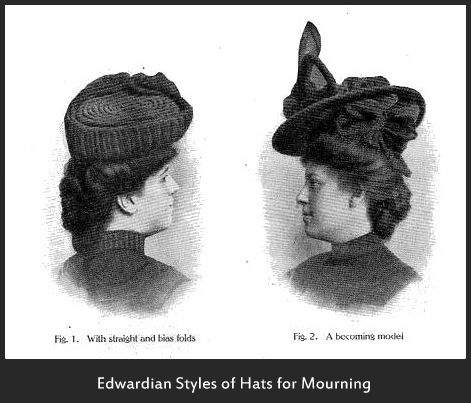
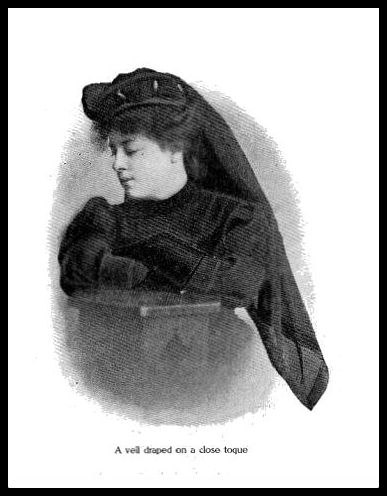
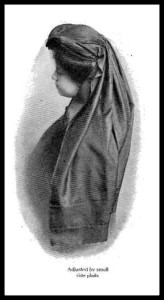
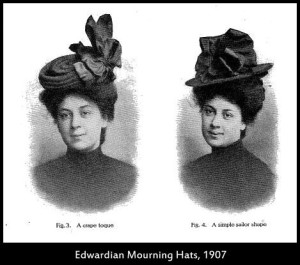
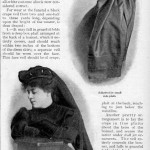
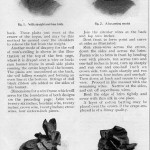


{ 0 comments… add one }